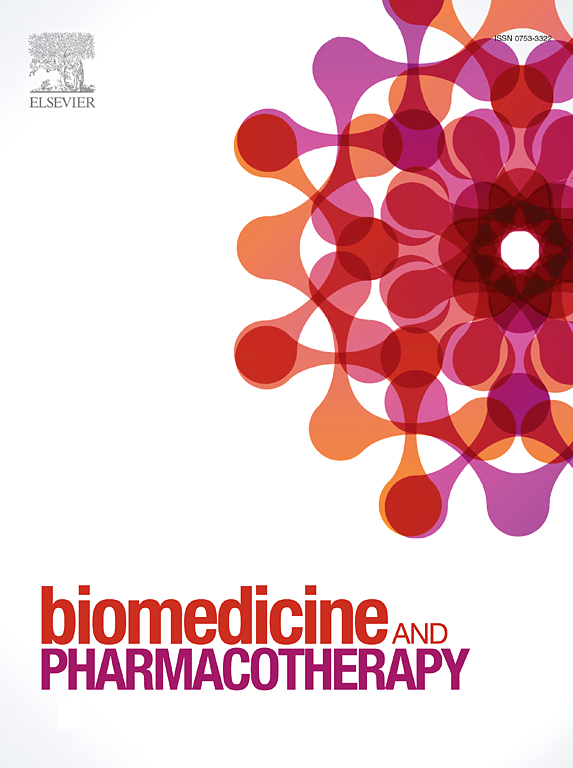菠萝蛋白酶提高一氧化氮的生物利用度:缓激肽与TRPV1/Ca2+ /AMPK/自噬信号传导的联系
IF 6.9
2区 医学
Q1 MEDICINE, RESEARCH & EXPERIMENTAL
引用次数: 0
摘要
菠萝蛋白酶是一种从菠萝茎中提取的蛋白酶,被认为可以预防动脉粥样硬化、非酒精性脂肪肝和凝血功能障碍。然而,菠萝蛋白酶在心血管系统中的血管保护机制尚不完全清楚。在这项研究中,我们探讨了激肽原-缓激肽系统在菠萝蛋白酶介导的内皮细胞(ECs)一氧化氮(NO)生物利用度中的作用。采用Griess法检测NO的生物利用度,采用western blot法检测蛋白表达,采用常规试剂盒检测尿素和精氨酸水平。采用Matrigel栓法进行体内血管生成。在内皮细胞中,菠萝蛋白酶通过增加细胞内Ca2+水平、激活amp激活的蛋白激酶(AMPK)和磷酸化内皮一氧化氮合酶(eNOS)来增加NO的产生。同时,菠萝蛋白酶激活ampk调控的自噬-尿素循环途径,增加细胞内NO前体l -精氨酸水平,导致NO生物合成增加。抑制缓激素受体B2 (B2R)或瞬时受体电位香草酸样蛋白1 (TRPV1)可阻止内皮细胞中Ca2+-AMPK-eNOS信号的激活、自噬-尿素循环途径和菠萝蛋白酶的NO生物合成。在机制上,菠萝蛋白酶将激肽原裂解为缓激肽,激活B2R-TRPV1-Ca2+-AMPK-eNOS通路和自噬-尿素循环- l -精氨酸通路,这两个事件可能共同促进内皮细胞NO的产生。体内实验表明,抑制B2R、TRPV1、eNOS或自噬活性会减弱菠萝蛋白酶诱导的Matrigel血管生成。本研究对菠萝蛋白酶在心血管系统中的血管保护作用的分子机制提出了新的认识。本文章由计算机程序翻译,如有差异,请以英文原文为准。
Bromelain enhances nitric oxide bioavailability: Bradykinin’s link to TRPV1/Ca2+ /AMPK/autophagy signaling
Bromelain, a protease enzyme extracted from the pineapple stem, is suggested to protect against atherosclerosis, non-alcohol fatty liver diseases, and coagulation dysfunction. However, the mechanism underlying the vascular protection of bromelain in the cardiovascular system is not fully understood. In this study, we explored the role of the kininogen-bradykinin system in bromelain-mediated nitric oxide (NO) bioavailability in endothelial cells (ECs). NO bioavailability was examined by Griess’s assay, western blot analysis was used to assess protein expression, the level of urea and arginine was evaluated by conventional assay kits. In vivo angiogenesis was performed by Matrigel plug assay. In ECs, bromelain increased NO production by increasing intracellular levels of Ca2+, activating AMP-activated protein kinase (AMPK), and phosphorylating endothelial nitric oxide synthase (eNOS). Concurrently, bromelain activated the AMPK-regulated autophagy-urea cycle pathway and increased intracellular levels of L-arginine, the precursor of NO, resulting in an increase in NO biosynthesis. Inhibition of bradykinin receptor B2 (B2R) or transient receptor potential vanilloid 1 (TRPV1) prevented the activation of Ca2+-AMPK-eNOS signaling, autophagy-urea cycle pathway, and NO biosynthesis by bromelain in ECs. Mechanistically, bromelain cleaved kininogen into bradykinin and activated B2R-TRPV1-Ca2+-AMPK-eNOS pathway and autophagy-urea cycle-L-arginine pathway, and these two events may work in concert to promote NO production in ECs. In vivo experiments showed that inhibition of B2R, TRPV1, eNOS, or autophagy activity attenuated bromelain-induced angiogenesis in Matrigel. This study presents novel understanding into the molecular mechanisms underlying the vascular protection of bromelain in the cardiovascular system.
求助全文
通过发布文献求助,成功后即可免费获取论文全文。
去求助
来源期刊
CiteScore
11.90
自引率
2.70%
发文量
1621
审稿时长
48 days
期刊介绍:
Biomedicine & Pharmacotherapy stands as a multidisciplinary journal, presenting a spectrum of original research reports, reviews, and communications in the realms of clinical and basic medicine, as well as pharmacology. The journal spans various fields, including Cancer, Nutriceutics, Neurodegenerative, Cardiac, and Infectious Diseases.

 求助内容:
求助内容: 应助结果提醒方式:
应助结果提醒方式:


